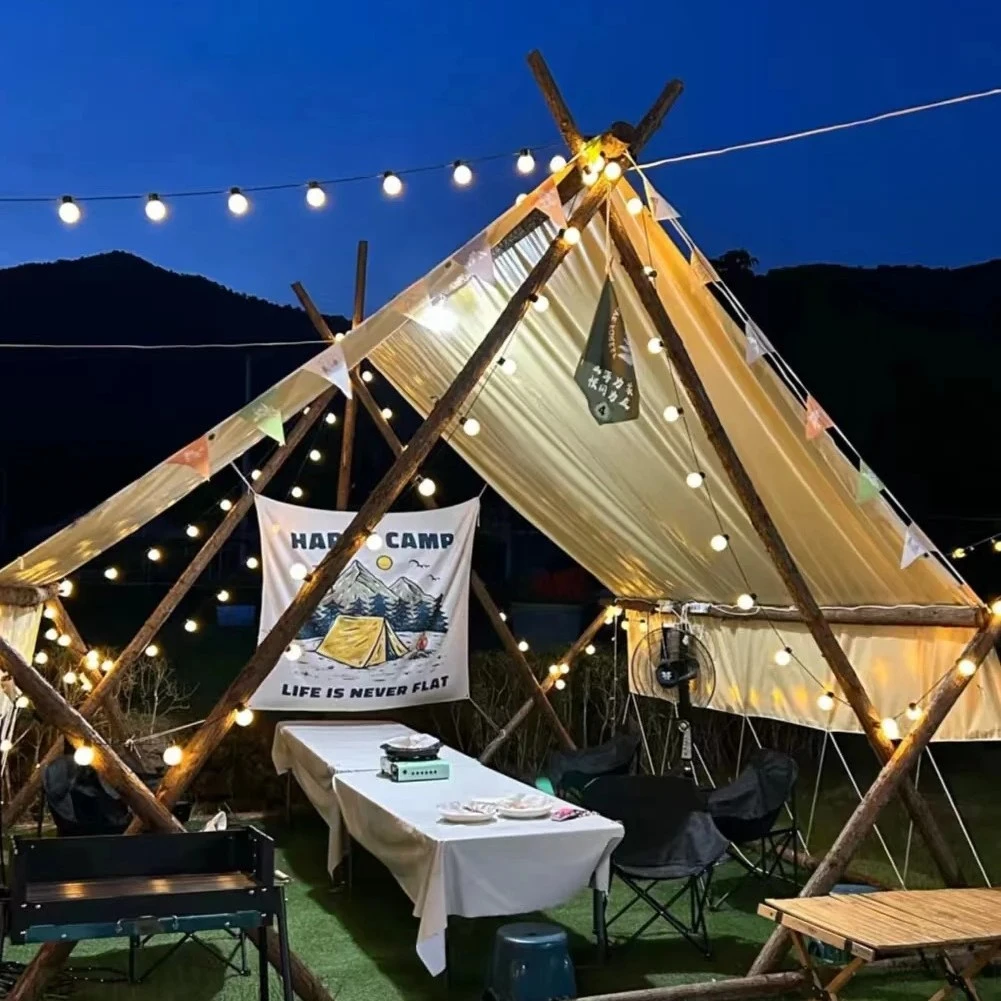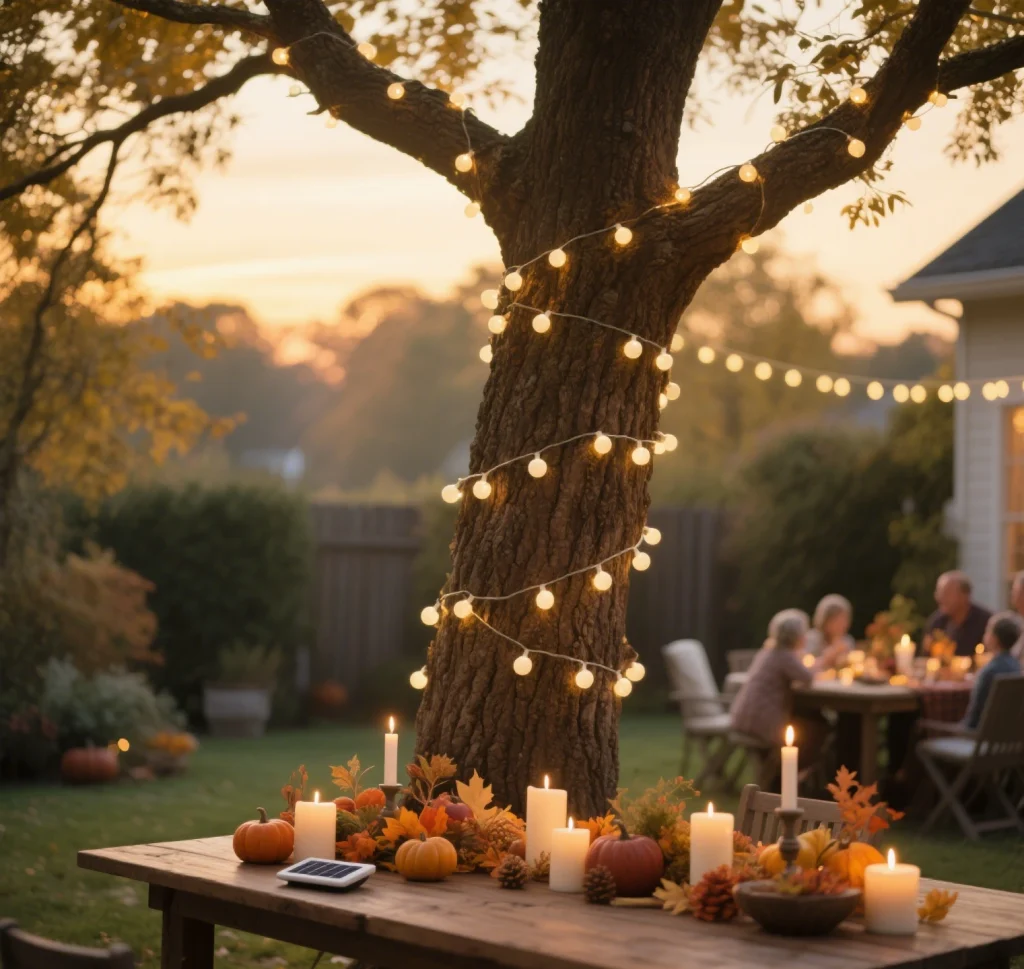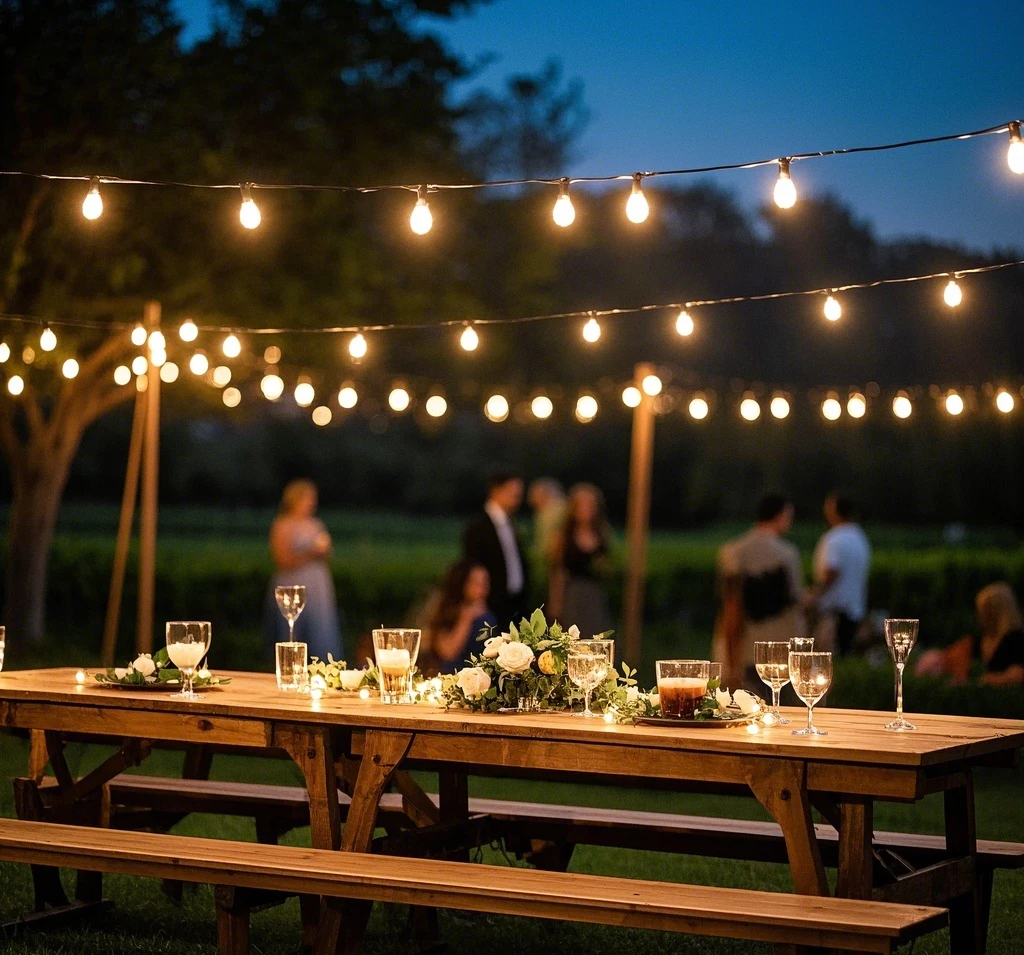Outdoor spaces are canvases for creating unforgettable moments, from intimate dinners under the stars to lively backyard gatherings. Yet, lighting these spaces often comes with challenges like tangled wires or short-lived illumination. Solar rope string lights offer a sustainable, flexible solution that transforms patios, gardens, and decks with minimal hassle. This guide explores common ambiance lighting pain points, shares expert techniques for matching lights to your setting, and provides practical tips for installation, performance optimization, and maintenance to keep your outdoor glow radiant year-round.

The Pain Points of Ambiance Lighting: Wiring Constraints and Durability Issues
Crafting the perfect outdoor atmosphere starts with lighting, but traditional options can feel restrictive. Hardwired systems often require professional installation, drilling into walls, or running unsightly extension cords across your space. These setups limit where you can place lights, tying you to nearby outlets and stifling creative freedom. For a cozy pergola or a sprawling garden, this lack of flexibility can be a major roadblock.
Another hurdle is maintaining consistent illumination. Traditional string lights, plugged into outlets, can drive up energy costs, especially during long events or seasonal displays like holiday setups. Battery-powered lights, while portable, demand frequent recharges or replacements, interrupting the mood and adding upkeep. Weather adds another layer of complexity—rain, wind, or freezing temperatures can damage low-quality lights, dimming their glow or cutting their lifespan short.
Solar rope string lights tackle these issues with elegance. Powered by sunlight, they eliminate the need for outlets or complex wiring, giving you the freedom to place them anywhere—from tree branches to fence lines. Designed for outdoor durability, these lights withstand elements like rain and UV exposure, delivering long-lasting performance without constant maintenance. They’re an eco-friendly, cost-effective way to illuminate your outdoor haven.
Core Techniques for Perfect Ambiance with Solar Rope String Lights
Achieving a captivating outdoor vibe requires aligning your lighting with the space and occasion. Here’s how to master ambiance using solar rope string lights.
Color Temperature and Scene Ambiance Matching
The color temperature of your lights sets the mood. Warm white tones (2700K–3000K) create a cozy, inviting feel, perfect for relaxed evenings on a deck or intimate dinners in a garden nook. For a vibrant, modern aesthetic, cooler tones around 4000K offer a crisp, lively glow, ideal for festive gatherings or sleek poolside setups. Many solar rope string lights feature adjustable color settings, letting you switch between warm and cool tones to match the event.
Consider the setting when choosing. Wrapping warm-toned lights around a wooden pergola can evoke a rustic, welcoming vibe, while cooler tones enhance a contemporary patio with clean lines. Test different temperatures during setup to find what complements your space best, ensuring the ambiance feels just right.
String Density and Spatial Layering
The arrangement and density of solar rope string lights shape the depth and character of your space. In compact areas like balconies or small patios, a single strand provides subtle elegance without overwhelming the setting. For larger spaces, such as expansive decks or gardens, layering multiple strands at varying heights creates a dynamic, immersive effect. For instance, draping lights along a pergola’s beams while wrapping another strand around nearby shrubs adds visual depth and highlights natural features.
Aim for 6–12 inches of spacing between loops or wraps to achieve balanced illumination. Too dense, and the lights may feel overpowering; too sparse, and the ambiance might lack impact. Experiment with patterns like zigzags, spirals, or loose drapes to enhance flow and accentuate architectural or natural elements, such as railings or tree canopies.
Key Installation Tips for Solar Rope String Lights
Proper installation ensures your solar rope string lights look stunning and perform reliably. Here’s how to secure them across various surfaces while avoiding common pitfalls.
Fixing Lights to Different Surfaces
The flexibility of solar rope string lights shines in their adaptability to diverse structures. For railings, use weather-resistant zip ties or adhesive clips to hold the ropes securely, keeping them taut but not overstretched. Wrapping lights around tree trunks or branches creates a natural, organic look—use soft ties to protect bark from damage. For pergolas or trellises, small hooks or staples anchor lights along beams, forming a canopy-like glow. Ensure all fixings are UV-resistant to endure sun exposure.
Plan the light path before installation. Spiraling lights around a deck railing creates a cohesive look, while crisscrossing strands above an open patio adds a festive touch. Verify the solar panel’s cord (typically 6–10 feet) reaches the lights’ starting point, ensuring seamless integration without awkward gaps.
Avoiding Tangles and Stress on Wiring
Tangled or overstretched lights can lead to damage or uneven illumination. Before installing, unroll the full length of your solar rope string lights and lay them flat to check for knots. When wrapping or draping, avoid pulling the rope tightly, as this can strain internal wiring. Opt for gentle curves or loose loops to maintain flexibility and reduce wear.
For intricate setups, like weaving lights through a trellis, work in small sections, securing each segment before moving forward. In large installations, use guide wires or support cables to bear the weight, reducing tension on the rope. These techniques ensure a polished look while prolonging the lights’ lifespan.
Optimizing Performance and Longevity
To keep your solar rope string lights shining brightly, focus on smart settings and strategic placement.
Matching Light Modes to Event Duration
Many solar rope string lights offer modes like steady, flashing, or fading. Choose a mode that suits the event’s duration and mood. Steady lighting is ideal for long evenings, providing consistent illumination without draining the battery quickly. Flashing or pulsing modes add flair for short, lively gatherings but may consume more power.
Most solar lights provide 6–10 hours of illumination after a full charge. For extended events, ensure the solar panel receives maximum sunlight during the day. Models with timers or dusk-to-dawn sensors automatically adjust lighting, conserving energy while maintaining ambiance. Adjust settings based on your needs, such as steady light for a dinner party or twinkling effects for a festive barbecue.

Solar Panel Placement for Optimal Charging
The efficiency of solar rope string lights depends on the solar panel’s placement. Position it in a spot with at least 6 hours of direct sunlight daily, ideally facing south to maximize exposure. Avoid shaded areas under trees or overhangs, as partial shade reduces charging efficiency. Models with detachable panels offer flexibility, letting you place the panel in a sunny spot while positioning lights in shadier areas.
To integrate the panel discreetly, tuck it behind plants, mount it on a fence, or stake it in a garden bed. Clean the panel regularly to remove dust or debris, ensuring optimal energy absorption. In cloudy regions, opt for lights with larger panels or backup battery options to maintain performance during overcast days.
Maintenance Tips for Durable Outdoor Performance
To ensure your solar rope string lights remain vibrant through seasons, follow these maintenance strategies.
Waterproofing and Moisture Protection
Outdoor lights face rain, humidity, and dew, so choosing solar rope string lights with high IP ratings (like IP65 or IP67) is crucial for water resistance. After heavy rain, inspect the ropes for water pooling and gently shake off excess moisture. Store lights indoors during prolonged stormy periods to prevent water ingress.
Regularly check connections and the solar panel for signs of corrosion. Apply silicone sealant to exposed connectors if needed, ensuring a tight seal. For coastal areas with salty air, rinse the ropes periodically with fresh water to prevent salt buildup, which can degrade materials over time.
Durability in Cold or Rainy Environments
In regions with harsh winters or frequent rain, durability is key. Choose solar rope string lights with robust materials like PVC or rubber coatings to withstand freezing temperatures. Before winter, test the lights for wear and store them indoors if temperatures drop below the manufacturer’s recommended range (often around -20°F).
In rainy climates, ensure the solar panel is angled to prevent water pooling, which can reduce charging efficiency. Regularly inspect the ropes for cracks or fraying, especially after storms. If lights dim prematurely, check the battery compartment for moisture and replace or dry it as needed. These steps keep your lights reliable through challenging conditions.
Conclusion
Solar rope string lights transform outdoor spaces with effortless elegance, solving the challenges of wiring, durability, and energy costs. By selecting the right color temperature, arranging lights for optimal density, installing them securely, and maintaining them properly, you can create a captivating ambiance that lasts. Whether illuminating a cozy patio or a sprawling garden, these lights offer a sustainable, versatile way to elevate every moment under the stars.


Leave a Reply